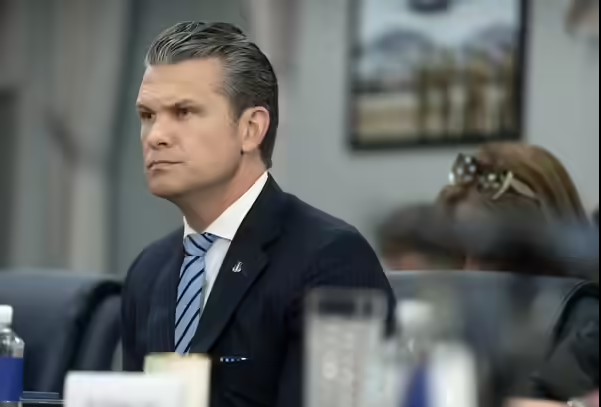A recent CNN report revealed that U.S. Defense Secretary Pete Hegseth did not inform the White House before deciding to temporarily suspend certain arms shipments to Ukraine. The move caught top officials by surprise, including the U.S. special envoy to Ukraine, Keith Kellogg, and Secretary of State Marco Rubio. According to five sources familiar with the matter, these key figures only learned about the pause through press reports.
Hegseth Acts Alone in Ukraine Arms Delay, Raising Alarms
This marks the second time in the same year that Hegseth independently halted weapon deliveries to Ukraine. A senior administration official confirmed that neither the White House nor Congress was notified beforehand. The unexpected nature of the decision raised concerns within the national security and defense communities. It also highlighted what insiders described as a “haphazard” policy-making process inside the Trump administration under Hegseth’s leadership.
Sources close to the matter stated that Hegseth lacks a chief of staff and a circle of trusted advisers. This absence reportedly makes it difficult for him to coordinate major policy decisions with other government agencies. Some officials believe this may have led to the poor communication around such an important action involving international military support.
Red Line Crossed: NATO Bases Now Just Miles from Russia’s Border — Kremlin Issues Stark Warning
Key Officials Left in the Dark
The report indicates that former President Donald Trump was not involved in the decision to pause the weapons supply. Three sources clarified that the move was not part of any directive from Trump as part of a broader review of military aid. Instead, the recommendation came from Elbridge Colby, the Undersecretary of Defense for Policy.
Colby has been known for his critical view on sending large volumes of U.S. military aid to Ukraine. He raised concerns over the pace at which the U.S. defense industry was replenishing its stockpiles. He conveyed his thoughts to Deputy Defense Secretary Steve Feinberg, who approved the proposal. Feinberg, in turn, was already worried about the slow progress in restocking U.S. military supplies.
After receiving internal recommendations, Hegseth finalized the suspension decision, believing it matched former President Trump’s “America First” stance. A source familiar with Hegseth’s mindset explained that he thought the pause would be well-received by the administration. However, once the White House learned about it, they had to quickly respond.
Two sources reported that White House officials agreed to temporarily support the move publicly. But they also made it clear that the Defense Department had to explain the decision to Congress, which had also been left out of the loop. This lack of coordination with lawmakers added to the confusion and concern.
White House and Trump React to Decision Made by Hegseth
During a press briefing in Washington, White House spokeswoman Caroline Levitt said the suspension of military aid was part of a standard review conducted by the Pentagon. She stated that no such decision was made without the president’s awareness or approval. Her remarks aimed to present the pause as a routine procedure rather than an uncoordinated move.
Despite that statement, Trump himself told Ukrainian President Volodymyr Zelenskyy in a phone call that he was not responsible for stopping the arms shipments. He reassured Zelenskyy that the United States would send “as much military assistance as we can.” In follow-up comments, Trump also criticized Russian President Vladimir Putin and said he intended to take appropriate steps. Soon after, he confirmed that the U.S. would resume the delivery of weapons to Ukraine.
NATO Rift Deepens as US Demands 5% Defense Budgets — Can Europe Afford the Price?
According to reports, the temporary halt affected critical systems such as Patriot missile interceptors and high-precision Guided Multiple Launch Rocket System (GMLRS) missiles. These are among the most valuable components of U.S. military support to Ukraine, especially in its defense efforts.
Later, the Department of Defense announced that more defensive weapons would be sent to Ukraine. Officials stated that the shipment was being made at Trump’s request, following the phone conversation with Zelenskyy. This move was seen as a way to manage the fallout from the earlier lack of coordination and to reaffirm U.S. support for Ukraine.
